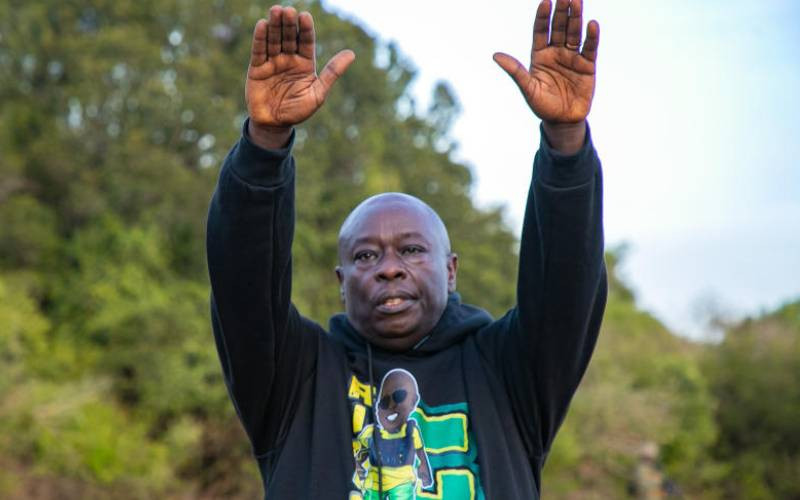On this day last year, I accompanied President Uhuru Kenyatta to Moroto, Uganda, and had the opportunity to sign the Karamoja Cluster Memorandum of Understanding (MoU) on behalf of Kenya.
The MoU aimed to economically empower local communities living along the Kenya-Uganda border, and boost peace and development.
I made a commitment for collaboration between our two countries to ensure communities living on both sides of the border are accorded opportunities for better co-operation, close collaboration and peaceful co-existence.
The Karamoja cluster is a cross-border area shared by the four neighbouring countries, and can be considered a single social-ecological zone whose development is best perceived within the framework of an integrated development plan jointly executed.
The MoU aimed to increase inter-ethnic interractions, collaborations and movements, leading to a reduction in tensions and resource-based conflicts, elimination of illegal flow of small arms and light weapons, empowerment of local and county government operations, as well as strengthening of peace building, community resilience and conflict prevention.
Other aspects of the MOU include cross-border trade and investment, disease surveilliance, natural resource management as well as improvement of livelihoods, food security and nutrition, infrastructure and co-ordination. We thus expected increased trade and strengthened cross-border links between communities on either side of the border.
President Kenyatta announced the start of five important projects that aimed to change the lives of pastoralist communities around the border regions. They included construction of three major dams in Turkana, West Pokot and Marsabit. The other two peace dividends, pilot water projects in Nasal and Napitiro in West Pokot, and Urum in Turkana County are complete. I am pleased to commission them during the one-year anniversary of the signing of the accord.
The peace projects will benefit 3,000 people in Urum and 1,000 households in West Pokot. These projects will go a long way towards improving socio-economic livelihoods through implementation of other strategic micro-projects.
Another important component of this engagement was improving security along the border areas, which previously saw perennial conflict caused mainly by cattle rustling. In the last one year, we have witnessed a relative period of tranquility without any incidence of cross-border cattle rustling.
In 2015, Uhuru assured Northern counties of the government’s intention to embark on infrastructural investment. This started with the construction of the road linking Isiolo to Moyale. By December of 2015, the government signed a similar MoU with Ethiopia covering the Moyale and Borana zone cluster. The road significantly increased the volume of trade between Kenya and Ethiopia. The cost of living has also been reduced in that region, leading to investment towards better relationships along the border.
Most of the border communities have close linguistics and ethnic ties, and better cross-border ties deny criminal elements the opportunity to hide within their people.
This week, the board of the World Bank announced the approval of Sh82 billion for the Horn of African Gateway Initiative Fund. This money will be used to upgrade the road from Isiolo to Mandera to bitumen standards.
The on-going construction to bitumen standards of Kitale to Endebess and Suam Road, Makutano to Kanyau, Amdat to Kanyau, and Moroto to Lodwar will spur regional connectivity and improve livelihoods. Gone will be the days when residents of the Karamoja cluster who felt marginalised then said they are travelling to ‘Kenya’ whenever they travelled to Nairobi.
- The writer is Devolution CS
Stay informed. Subscribe to our newsletter
 The Standard Group Plc is a
multi-media organization with investments in media platforms spanning newspaper
print operations, television, radio broadcasting, digital and online services. The
Standard Group is recognized as a leading multi-media house in Kenya with a key
influence in matters of national and international interest.
The Standard Group Plc is a
multi-media organization with investments in media platforms spanning newspaper
print operations, television, radio broadcasting, digital and online services. The
Standard Group is recognized as a leading multi-media house in Kenya with a key
influence in matters of national and international interest.
 The Standard Group Plc is a
multi-media organization with investments in media platforms spanning newspaper
print operations, television, radio broadcasting, digital and online services. The
Standard Group is recognized as a leading multi-media house in Kenya with a key
influence in matters of national and international interest.
The Standard Group Plc is a
multi-media organization with investments in media platforms spanning newspaper
print operations, television, radio broadcasting, digital and online services. The
Standard Group is recognized as a leading multi-media house in Kenya with a key
influence in matters of national and international interest.








